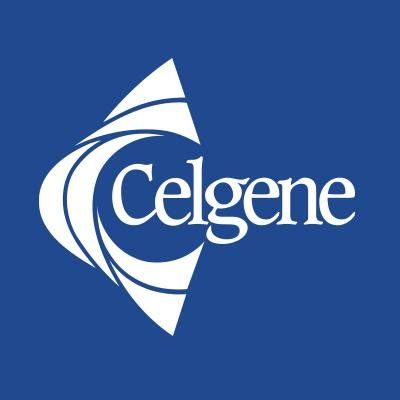预约演示
更新于:2025-05-07
CD20 positive Hematologic Neoplasms
CD20阳性血液肿瘤
更新于:2025-05-07
基本信息
别名- |
简介- |
关联
8
项与 CD20阳性血液肿瘤 相关的药物靶点 |
作用机制 CD20抑制剂 [+3] |
原研机构 |
在研适应症 |
非在研适应症 |
最高研发阶段批准上市 |
首次获批国家/地区 美国 |
首次获批日期2013-11-01 |
作用机制 CK1α抑制剂 [+3] |
在研机构 |
原研机构 |
非在研适应症 |
最高研发阶段批准上市 |
首次获批国家/地区 美国 |
首次获批日期2005-12-27 |
靶点 |
作用机制 CD20抑制剂 [+3] |
在研机构 |
原研机构 |
最高研发阶段批准上市 |
首次获批国家/地区 美国 |
首次获批日期1997-11-26 |
11
项与 CD20阳性血液肿瘤 相关的临床试验NCT05489276
Phase I Clinical Trial of TQB2825 Injection in Subjects With CD20 Positive Hematological Tumors
This is a single-group, open, dose escalation and expansion Phase I clinical study, with phase I being a dose escalation study and Phase II being a dose expansion study. The purpose of this study was to evaluate the safety and tolerability of TQB2825 injection in CD20-positive hematological tumor subjects, and to determine dose-limiting toxicity (DLT), maximum tolerated dose (MTD) (if any), or optimal biological dose (OBD), and recommended phase II dose (RP2D).
开始日期2022-03-22 |
申办/合作机构  正大天晴药业集团股份有限公司 正大天晴药业集团股份有限公司 [+1] |
CTR20212983
注射用 TQB2825 在 CD20 阳性血液肿瘤受试者中的 I 期临床试验
主要目的:评估注射用TQB2825在CD20阳性血液肿瘤受试者中的安全性和耐受性,确定剂量限制性毒性(DLT)、最大耐受剂量(MTD)(如有)或最佳生物剂量(OBD)以及II期推荐剂量(RP2D)。
次要目的:评估注射用TQB2825在CD20阳性血液肿瘤受试者中的药代动力学(PK)特征; 评估注射用TQB2825治疗复发/难治CD20阳性血液肿瘤的初步有效性; 评估注射用TQB2825的免疫原性;评估注射用TQB2825在CD20阳性血液肿瘤受试者中的药效动力学(PD)特征。
开始日期2022-03-10 |
申办/合作机构 |
NCT02924402
A Phase 1 Multidose Study to Evaluate the Safety and Tolerability of XmAb13676 (Plamotamab) in Patients With CD20-Expressing Hematologic Malignancies
The purpose of this study is to determine the safety and tolerability of intravenous (IV) and subcutaneous (SC) administration of XmAb13676 and to determine the maximally tolerated dose (MTD) and/or recommended dose (RD).
开始日期2016-10-01 |
申办/合作机构  Xencor, Inc. Xencor, Inc. [+1] |
100 项与 CD20阳性血液肿瘤 相关的临床结果
登录后查看更多信息
100 项与 CD20阳性血液肿瘤 相关的转化医学
登录后查看更多信息
0 项与 CD20阳性血液肿瘤 相关的专利(医药)
登录后查看更多信息
60
项与 CD20阳性血液肿瘤 相关的文献(医药)2024-10-01·Cellular Oncology
Rituximab potentially improves clinical outcomes of CAR-T therapy for r/r B-ALL via sensitizing leukemia cells to CAR-T-mediated cytotoxicity and reducing CAR-T exhaustion
Article
作者: Liu, Lingling ; Zhu, Xiaming ; Li, Megyn ; Yu, Lei ; Cui, Qingya ; Tang, Xiaowen ; Li, Yangzi ; Liu, Sining ; Li, Zheng ; Cui, Wei ; Wu, Depei ; Kang, Liqing ; Gao, Jun
2023-09-01·The Korean journal of internal medicine
Rituximab plus multiagent chemotherapy for newly diagnosed CD20-positive acute lymphoblastic leukemia: a prospective phase II study.
Article
作者: Baek, Dong Won ; Lee, Ho Sup ; Moon, Joon Ho ; Lee, Yoo Jin ; Eom, Hyeon-Seok ; Lee, Se Ryeon ; Do, Young Rok ; Kim, Inho ; Park, Han-Seung ; Kim, Sung-Hyun ; Kim, Dae Young ; Lee, Je-Hwan ; Ahn, Jae-Sook ; Sohn, Sang Kyun ; Lee, Won-Sik
2022-06-01·Human Pathology3区 · 医学
CD3-and CD20-negative extramedullary non-Hodgkin leukemia/lymphoma: a histopathological study of 118 cases
3区 · 医学
Article
作者: Izutsu, Koji ; Taniguchi, Hirokazu ; Makita, Shinichi ; Sasaki, Hirokazu ; Munakata, Wataru ; Hori, Yoshikazu ; Iwaki, Noriko ; Maeshima, Akiko Miyagi ; Fukuhara, Suguru ; Suzuki, Tatsuya ; Hattori, Daiki
11
项与 CD20阳性血液肿瘤 相关的新闻(医药)2024-08-26
·米内网
精彩内容
近日,正大天晴的1类新药TQB2825注射液获得临床试验默示许可,拟联合免疫化疗用于B细胞非霍奇金淋巴瘤的治疗。今年以来,正大天晴已有23款1类新药获批临床,其中20款为抗肿瘤和免疫调节剂。
1类新药TQB2825注射液是一款CD20/CD3双特异性抗体,其临床试验申请于2024年6月21日获得CDE承办受理,8月23日获得临床试验默示许可,拟联合免疫化疗用于B细胞非霍奇金淋巴瘤的治疗。
米内网数据显示,2023年中国城市公立医院、县级公立医院、城市社区中心以及乡镇卫生院(简称中国公立医疗机构)终端抗肿瘤和免疫调节剂(化学药+生物药)销售额超过1800亿元,同比增长4.43%。
中国公立医疗机构终端抗肿瘤和免疫调节剂销售情况(单位:万元)来源:米内网中国公立医疗机构药品终端竞争格局
针对TQB2825,正大天晴先后开发了注射用TQB2825、TQB2825注射液2款1类新药。注射用TQB2825用于CD20阳性血液肿瘤的治疗,已处于Ⅰ期临床试验阶段。
今年以来,正大天晴的创新研发管线进展不断,目前已有23款1类新药获批临床,其中抗肿瘤和免疫调节剂有20款,占比接近87%。
抗肿瘤和免疫调节剂是正大天晴重点关注的疾病治疗药物,公司在该领域已有6款1类新药获批上市,包括盐酸安罗替尼胶囊、派安普利单抗注射液、艾贝格司亭α注射液、富马酸安奈克替尼胶囊、贝莫苏拜单抗注射液、枸橼酸依奉阿克胶囊。
资料来源:米内网数据库、CDE注:米内网《中国公立医疗机构药品终端竞争格局》,统计范围是:中国城市公立医院、县级公立医院、城市社区中心以及乡镇卫生院,不含民营医院、私人诊所、村卫生室;上述销售额以产品在终端的平均零售价计算。
本文为原创稿件,转载请注明来源和作者,否则将追究侵权责任。
投稿及报料请发邮件到872470254@qq.com稿件要求详询米内微信首页菜单栏商务及内容合作可联系QQ:412539092
●温馨提示●
因为微信公众号修改了推送规则,最近很多读者反映没有及时看到推文。
把米内网设为“星标”,就能每天与我们不见不散啦,具体操作如下:
【分享、点赞、在看】点一点不失联哦
临床1期上市批准
2024-06-23
·药时代
正文共: 4618字 12图
预计阅读时间: 12分钟
(收集周期:6.17-6.21,国内部分为首次申请临床、首次申请上市、批准上市的创新药;全球部分为首次批准上市的新药)
国内创新药IND汇总
1、Intercept/赛纽仕:奥贝胆酸片
作用机制:FXR抑制剂
适应症:原发性胆汁性胆管炎/非酒精性脂肪性肝炎
6月19日,Intercept/赛纽仕的奥贝胆酸片的临床试验申请(IND)获CDE受理。奥贝胆酸是一种法尼酯X受体(FXR)激动剂,FXR通常在肠与肝脏中表达,是胆酸、炎症反应、纤维化与代谢通路的关键调节分子;FXR的活化可以降低肝细胞内的胆酸浓度。早在2016年5月被FDA批准联合熊脱氧胆酸(UDCA)用于UDCA单药治疗应答不佳的原发性胆汁性胆管炎(PBC)成人患者,或单药用于无法耐受的PBC成人患者。奥贝胆酸是继UDAC被授予孤儿药批准后的20年内,第二个用于原发性胆管炎(PBC)患者的药物。此前,国内公司正大天晴已向中国国家药品监督管理局提交奥贝胆酸片用于PBC的上市申请并获得受理。
2、恒动生物:CS01单抗注射液
作用机制:OX40单抗
适应症:实体瘤
6月21日,恒动生物的CS01单抗注射液的IND获CDE受理。CS01是一款靶向免疫细胞共刺激受体分子OX40单克隆抗体,拟通过静脉给药的方式,用于晚期实体瘤患者的免疫治疗。临床前研究表明,CS01以更高的活性反应率,显著地突显出与同靶点产品差异化的竞争优势。OX40
是肿瘤坏死因子受体超家族成员,主要表达于活化的T 细胞表面,与配体OX40L结合后激活下游免疫应答,促进T 细胞存活、分化及免疫应答。该靶点的药物研发集中于两个领域:OX40 激动剂主要开发用于肿瘤治疗,增强肿瘤特异性效应T 细胞免疫反应,提升杀伤肿瘤细胞的作用;OX40/OX40L 拮抗剂则主要开发用于治疗自身免疫疾病,通过阻断OX40 和OX40L 的结合抑制自免疾病中过度活化的免疫反应。
3、炫景生物:RG002C0106注射液
作用机制:——
适应症:补体介导的相关疾病
6月21日,炫景生物的RG002C0106注射液的IND获CDE受理。RG002C0106是炫景生物基于其自主建立的RIHOST、RICMO、LICOD等核心技术平台开发的siRNA药物,通过第二代N'-乙酰半乳糖胺(GalNAc)缀合技术高效递送到肝实质细胞,并抑制肝脏中补体因子的表达,从而治疗补体介导的相关疾病。临床前研究显示,RG002C0106具有极佳的有效性、安全性和长效性,并在啮齿类和非人灵长类等多种临床前动物模型中得到验证,尤其在食蟹猴疾病模型上观察到非常显著的一系列临床试验终点指标的剂量依赖改善,具有成为同类首款(First-in-Class)药物潜力。
4、正大天晴:TQB2825注射液
作用机制:靶向CD20/CD3双抗
适应症:血液肿瘤
6月21日,正大天晴的TQB2825注射液的IND获CDE受理。TQB2825通过特异性结合CD20阳性靶细胞和CD3阳性T细胞,将免疫T细胞招募至靶细胞周围,激活T细胞,诱导T细胞介导的肿瘤细胞杀伤(TDCC)作用杀伤靶细胞,用于治疗一些耐药复发或难治的包括急性髓系白血病(AML)、骨髓增生异常综合征(MDS)、非霍奇金淋巴瘤、多发性骨髓瘤(MM)等血液肿瘤。该药物拟用于CD20阳性血液肿瘤的治疗。
国内创新药BLA汇总
1、诺诚健华:注射用坦昔妥单抗
作用机制:CD19单抗
适应症:弥漫性大B细胞淋巴瘤
6月21日,诺诚健华的注射用坦昔妥单抗的生物制品上市许可申请(BLA)获CDE受理,并纳入优先审评。坦昔妥单抗(tafasitamab)是Incyte开发的一款CD19单抗,其联合来那度胺是在美国首个获批的针对DLBCL 的二线及二线以上疗法,并在欧洲获批准用于治疗不适合作自体干细胞移植(ASCT)的复发性DLBCL 成人患者。五年随访数据显示,Tafasitamab联合来那度胺治疗R/R DLBCL的客观缓解率(ORR)达57.5%,完全缓解(CR)率达41.3%,未出现新的安全性事件。2021年8月,诺诚健华与Incyte签订合作和许可协议,获得坦昔妥单抗在大中华区(中国大陆、香港、澳门和台湾地区)在血液瘤和实体瘤开发及商业化权利;根据协议条款,诺诚健华支付3500 万美元首付款及至多8250 万美元潜在开发、注册和商业化里程碑付款,以及分级销售分成。
国内创新药上市获批
1、正大天晴:依奉阿克胶囊
作用机制:c-Met/ALK/ROS多靶点酪氨酸激酶抑制剂
适应症:非小细胞肺癌
6月17日,国家药品监督管理局(“NMPA”)公示,已批准正大天晴申报的1类创新药枸橼酸依奉阿克胶囊(商品名:安洛晴)上市,用于未经过间变性淋巴瘤激酶(ALK)抑制剂治疗的ALK阳性的局部晚期或转移性非小细胞肺癌(NSCLC)患者的治疗。依奉阿克(TQ-B3139,CT-1139)是正大天晴与首药控股联合开发的c-Met/ALK/ROS多靶点酪氨酸激酶抑制剂,临床前数据表明,其对EML4-ALK融合细胞株的抗肿瘤活性是克唑替尼的约5倍,并可能对ALK-TKI耐药突变R1275Q、L1152R、C1156Y和L1196M敏感;此外,TQ-B3139在c-MET激活导致的获得性耐药中优于克唑替尼。在一线治疗ALK阳性晚期非小细胞肺癌的多中心、随机、对照III期临床中,截至2022年8月31日,依奉阿克对比克唑替尼的中位无进展生存期(mPFS)分别为24.87个月与11.6个月;针对基线存在可评估脑转移病灶的患者,依奉阿克对比克唑替尼患者客观缓解率(ORR)分别为78.95% 和23.81%,缓解持续时间(DOR)分别为25.82个月和7.39个月。
2、 圣和药业:甲磺酸瑞厄替尼片
作用机制:EGFR T790M抑制剂
适应症:非小细胞肺癌
6月17日,NMPA公示,圣和药业自主研发的甲磺酸瑞厄替尼片(商品名:圣瑞沙)获批上市,用于既往经表皮生长因子受体(EGFR)酪氨酸激酶抑制剂(TKI)治疗时或治疗后出现疾病进展,并且经检测确认存在EGFR T790M突变阳性的局部晚期或转移性非小细胞肺癌(NSCLC)成人患者的治疗。瑞厄替尼是新型不可逆第三代EGFR TKI,可选择性抑制EGFR突变细胞系,比抑制野生型EGFR细胞系敏感度高出约 198 倍。在一项针对既往经第一/二代EGFR TKI治疗进展并伴有EGFR
T790M突变阳性的局部晚期或转移性NSCLC患者开展的多中心、开放的II期关键性临床研究中,经独立影像评审委员会(IRC)评估,该研究的客观缓解率(ORR)为60.8%,疾病控制率(DCR)为92.5%,中位无进展生存期(PFS)为12.2个月,中位缓解持续时间(DoR)为13.9个月。除此以外,其一线治疗EGFR敏感突变的局部晚期或转移性NSCLC患者的随机、双盲、阳性药物为对照的多中心III期临床试验,也已达到主要研究终点,即IRC评估的中位PFS为19.3个月,相比于吉非替尼标准治疗提升了9.5个月。
3、康哲生物:亚甲蓝肠溶缓释片
作用机制:Tau聚集抑制剂
适应症:结直肠癌
6月18日,康哲生物的亚甲蓝肠溶缓释片(商品名:莱芙兰®,Lumeblue)的NDA正式获得NMPA批准,用于在接受结肠镜检查筛查或监测的成人患者中增强结直肠病变的可视化。该药物座为一种口服诊断药物,采用多基质(MMX)的专利技术,将活性物质直接输送至结肠并局部控制释放。作为一种增强剂染料,产品可增加结直肠病变和健康粘膜之间的对比度;在肠道准备步骤中服用,确保在进行肠镜检查时已完成结直肠染色,在增加结直肠病变检出率的同时,潜在地简化结肠镜检查程序,使结肠镜检查更高效,筛查效益更高。III期临床研究结果显示,其可显著提高非息肉样结直肠病变检出率(主要研究终点),从而提高危险病变如非息肉样腺瘤的检测率(次要终点)。该药物基于Cosmo公司的创新技术配制而成,最早于2020年被欧洲药品管理局(EMA)批准上市;2020年12月,康哲药业与Cosmo公司就Lumeblue等产品达成合作,前者获得在中国大陆、香港、澳门和台湾地区开发和商业化该产品的独家授权。
4、迪哲医药:戈利昔替尼胶囊
作用机制:JAK1抑制剂
适应症:外周T细胞淋巴瘤
6月19日,迪哲医药宣布,公司自主研发的I类新药戈利昔替尼胶囊(商品名:高瑞哲®)正式获得NMPA批准,用于既往至少接受过一线系统性治疗的复发或难治的外周T细胞淋巴瘤(r/r PTCL)成人患者。戈利昔替尼是新一代特异性JAK1 抑制剂,对 JAK 家族其它成员有 200 - 400 倍的选择性。凭借独特的创新分子结构设计,戈利昔替尼可实现对JAK1的极高选择性和长半衰期,在人体内的半衰期长达近50个小时,持续稳定强抑制PTCL的同时,大幅提高治疗安全性和耐受性。
本次获批主要基于全球关键性注册临床研究“JACKPOT8 B部分”(JACKPOT8 Part B、JACKPOT8B),该研究旨在评估高瑞哲®治疗r/r PTCL的疗效和安全性,主要终点为独立影像评估委员会(IRC)评估的客观缓解率(ORR),结果显示:(1)经IRC确认的ORR达44.3%,完全缓解(CR)率达23.9%。(2)在不同亚型PTCL中均观察到肿瘤缓解,满足了不同PTCL亚型的治疗需求。(3)中位缓解持续时间(DoR)长达20.7个月。该药物是继西达本胺于2014年在中国获批上市后,近十年唯一针对PTCL获批的创新药。
全球首批新药情况
1、默沙东:21价肺炎球菌结合疫苗
作用机制:——
适应症:侵袭性肺炎球菌疾病
6月18日,FDA批准默沙东(MSD)的21价肺炎球菌结合疫苗Capvaxive(V116)上市,用于预防成人侵袭性肺炎球菌疾病和肺炎球菌肺炎。Capvaxive是首个专门为成人设计的肺炎球菌结合疫苗,专门设计用于解决代表成人肺炎球菌疾病的血清型,包括8 种独特的血清型,15A、15C、16F、23A、23B、24F、31 和35B,它们约导致30%的成人疾病。除此以外,V116 有可能扩大疾病覆盖范围,帮助预防65 岁以上个体中85%的侵袭性肺炎球菌疾病。根据已披露的STRIDE-3和STRIDE-6临床试验数据,V116与PCV20相比,针对两种疫苗共有的血清型具有非劣效的免疫反应,V116特有的血清型也观察到阳性免疫反应;在研究前至少一年接受过肺炎球菌疫苗的成年人中,V116对覆盖的所有21种血清型均具有免疫原性。
全球新药III期临床汇总
封面图来源:Pixabay
版权声明/免责声明
本文为授权转载文章。
本文仅作信息交流之目的,不提供任何商用、医用、投资用建议。
文中图片、视频、字体、音乐等素材或为药时代购买的授权正版作品,或来自微信公共图片库,或取自公司官网/网络,部分素材根据CC0协议使用,版权归拥有者,药时代尽力注明来源。
如有任何问题,请与我们联系。
衷心感谢!
药时代官方网站:www.drugtimes.cn
联系方式:
电话:13651980212
微信:27674131
邮箱:contact@drugtimes.cn
100%预防!是福还是祸?——HIV新药研发的里程碑及其深远影响
基因疗法的胜利
计算赋能的PROTAC开发平台及License-out项目介绍 | 药时代路演第7期
AKT抑制剂,再传噩耗!
点击这里,原来很多老外朋友也在这里!
临床申请孤儿药免疫疗法临床3期
2023-10-31
Poster presentation describes the development of SNAP CAR platform technology as a "universal" CAR therapy with the potential to target multiple antigens through combinatorial use of different adaptors
WEXFORD, Pa., Oct. 31, 2023 /PRNewswire/ -- Coeptis Therapeutics Holdings, Inc. (NASDAQ: COEP) ("Coeptis" or "the Company"), a biopharmaceutical company developing innovative cell therapy platforms for cancer, today announced that research demonstrating the potential of the SNAP-CAR T-cell platform to target multiple antigens, including HER2 and CD20, through combinatorial use of different adaptors will be the subject of a poster presentation at the Society for Immunotherapy of Cancer's 38th Annual Meeting (SITC 2023). SITC 2023 is being held Nov. 1–5, 2023, at San Diego Convention Center in San Diego.
The poster presentation titled, "SNAP CAR T cells for programmable antigen targeting," describes research involving SNAP-CAR, a "universal" CAR T cell therapy platform, that demonstrates the technology's versatile antigen targeting abilities both in vitro and in vivo in human tumor xenograft models. In vitro experiments showed potent and specific SNAP-CAR function with co-administered adaptors targeting HER2, EGFR, and CD20 on cancer cell lines including activation of CD69 and CD107a markers, specific target cell lysis, and IFN-gamma production. Additionally, the researchers tested SNAP-CAR T cells in vivo in a human leukemia tumor xenograft NSG mouse model targeting HER2, observing that SNAP-CAR T cells were able to significantly reduce tumor burden, leading to a lack of detectable tumors in the majority of mice. Further, in another leukemia model targeting the CD20 antigen, SNAP-CAR T cells showed significant inhibition of tumor growth. Finally, evaluating two anti-HER2 adaptors with distinct binding epitopes in a human ovarian cancer xenograft model, the researchers observed a significant tumor reduction with both adaptors compared to adaptor only and SNAP-CAR T cell only controls.
"These findings suggest SNAP-CAR can potentially enable the development of T-cell therapies that can be tuned by adaptor dose and targeted toward multiple antigens through combinatorial use of different adaptors, potentially avoiding toxicities and relapse due to antigen loss," commented Jason Lohmueller, Ph.D., Assistant Professor of Surgery and Immunology in the Division of Surgical Oncology Research, University of Pittsburgh. "While still early in its development, we continue to see vast potential for the SNAP-CAR platform for treating both liquid and solid tumor malignancies."
"The data being presented at SITC 2023 encapsulates the groundbreaking research being conducted at the University of Pittsburgh, which demonstrates the potential of SNAP-CAR T-cells to reduce tumor burden and tumor growth in numerous cancers, including HER2-expressing and CD20-expressing cancers," said Dave Mehalick, President and CEO of Coeptis Therapeutics. "Coeptis is energized more than ever to forge the path forward with the powerful SNAP-CAR platform to develop T-cell and NK-cell technologies for various undertreated cancer indications."
Details of the presentation are as follows:
About Coeptis Therapeutics Holdings, Inc.
Coeptis Therapeutics Holdings, Inc., together with its subsidiaries including Coeptis Therapeutics, Inc. and Coeptis Pharmaceuticals, Inc., (collectively "Coeptis"), is a biopharmaceutical company developing innovative cell therapy platforms for cancer that have the potential to disrupt conventional treatment paradigms and improve patient outcomes. Coeptis' product portfolio and rights are highlighted by assets licensed from Deverra Therapeutics, including an allogeneic cellular immunotherapy platform and DVX201, a clinical-stage, unmodified natural killer cell therapy technology. Additionally, Coeptis is developing a universal, multi-antigen CAR T technology licensed from the University of Pittsburgh (SNAP-CAR), and the GEAR™ cell therapy and companion diagnostic platforms, which Coeptis is developing with VyGen-Bio and leading medical researchers at the Karolinska Institutet. Coeptis' business model is designed around maximizing the value of its current product portfolio and rights through in-license agreements, out-license agreements and co-development relationships, as well as entering into strategic partnerships to expand its product rights and offerings, specifically those targeting cancer. The Company is headquartered in Wexford, PA. For more information on Coeptis visit .
About the Emerging Growth Conference
The Emerging Growth conference is an effective way for public companies to present and communicate their new products, services and other major announcements to the investment community from the convenience of their office, in a time efficient manner. The Conference focus and coverage includes companies in a wide range of growth sectors, with strong management teams, innovative products & services, focused strategy, execution, and the overall potential for long term growth. Its audience includes potentially tens of thousands of Individual and Institutional investors, as well as Investment advisors and analysts. All sessions will be conducted through video webcasts and will take place in the Eastern time zone.
Cautionary Note Regarding Forward-Looking Statements
This press release and statements of our management made in connection therewith contain or may contain "forward-looking statements" (as defined in Section 27A of the Securities Act of 1933, as amended, and Section 21E of the Securities Exchange Act of 1934, as amended). Forward-looking statements include statements concerning our plans, objectives, goals, strategies, future events or performance, and underlying assumptions, and other statements that are other than statements of historical facts. When we use words such as "may," "will," "intend," "should," "believe," "expect," "anticipate," "project," "estimate" or similar expressions that do not relate solely to historical matters, we are making forward-looking statements. Forward-looking statements are not a guarantee of future performance and involve significant risks and uncertainties that may cause the actual results to differ materially and perhaps substantially from our expectations discussed in the forward-looking statements. Factors that may cause such differences include but are not limited to: (1) the inability to maintain the listing of the Company's securities on the Nasdaq Capital Market; (2) the risk that the integration of the Deverra licensed assets will disrupt current plans and operations of the Company; (3) the inability to recognize the anticipated benefits of the newly-licensed assets, which may be affected by, among other things, competition, the ability of the Company to grow and manage growth economically and hire and retain key employees; (4) the risks that the Company's products in development or the newly-licensed assets fail clinical trials or are not approved by the U.S. Food and Drug Administration or other applicable regulatory authorities; (5) costs related to integrating the newly-licensed Deverra assets and pursuing the contemplated asset development paths; (6) changes in applicable laws or regulations; (7) the possibility that the Company may be adversely affected by other economic, business, and/or competitive factors; and (8) the impact of the global COVID-19 pandemic on any of the foregoing risks and other risks and uncertainties identified in the Company's filings with the Securities and Exchange Commission (the "SEC"). The foregoing list of factors is not exclusive. All forward-looking statements are subject to significant uncertainties and risks including, but not limited, to those risks contained or to be contained in reports and other filings filed by the Company with the SEC. For these reasons, among others, investors are cautioned not to place undue reliance upon any forward-looking statements in this press release. Additional factors are discussed in the Company's filings made or to be made with the SEC, which are available for review at . We undertake no obligation to publicly revise these forward-looking statements to reflect events or circumstances that arise after the date hereof unless required by applicable laws, regulations, or rules.
CONTACTS
Coeptis Therapeutics, Inc.
Andy Galy, Sr. VP of Communications
[email protected]
Tiberend Strategic Advisors, Inc.
Investors
Daniel Kontoh-Boateng
[email protected]
Media
David Schemelia
[email protected]
SOURCE Coeptis Therapeutics
细胞疗法免疫疗法
分析
对领域进行一次全面的分析。
登录
或

生物医药百科问答
全新生物医药AI Agent 覆盖科研全链路,让突破性发现快人一步
立即开始免费试用!
智慧芽新药情报库是智慧芽专为生命科学人士构建的基于AI的创新药情报平台,助您全方位提升您的研发与决策效率。
立即开始数据试用!
智慧芽新药库数据也通过智慧芽数据服务平台,以API或者数据包形式对外开放,助您更加充分利用智慧芽新药情报信息。
生物序列数据库
生物药研发创新
免费使用
化学结构数据库
小分子化药研发创新
免费使用





